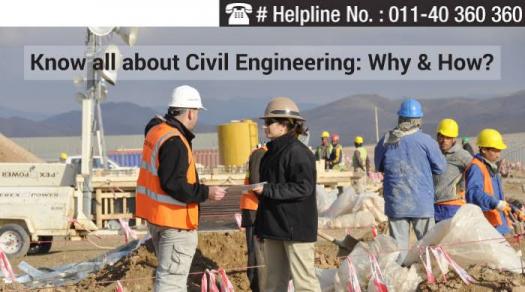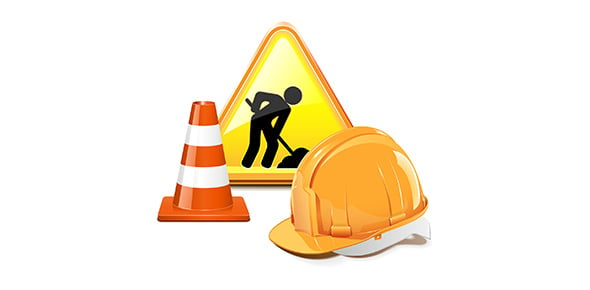Can You Pass This Civil Engineering Exam? Trivia Questions Quiz
-
The bearing capacity of soils can be improved by
-
Increasing the depth of footing
-
Draining the subsoil water
-
Ramming the granular material like a crushed stone in the soil
-
All of the above
-
Are you preparing for your exams? Trying to study but that formula won't just stay put? Does that definition keep escaping you? Well, what you should do is play our quiz. It is such a fun way to distract yourself and study all at once. Play it now!

Quiz Preview
- 2.
The maximum bearing capacity of the soil is that of…
-
Hard rocks
-
Black cotton soil
-
Dry, coarse sandy soil
-
Fine sandy soil
Correct Answer
A. Hard rocksExplanation
Hard rocks have the highest maximum bearing capacity compared to other types of soil. This is because hard rocks are compact and dense, providing strong support for structures and heavy loads. On the other hand, black cotton soil, dry coarse sandy soil, and fine sandy soil have lower bearing capacities due to their loose and less stable nature. Therefore, hard rocks are the most suitable for supporting heavy structures and loads.Rate this question:
-
- 3.
Pick up the commonly adopted geophysical method in civil engineering from the following :
-
Gravitational method
-
Electrical resistivity method
-
Both the seismic method and electrical resistivity method
-
The seismic method
Correct Answer
A. Both the seismic method and electrical resistivity methodExplanation
Both the seismic method and electrical resistivity method are commonly adopted geophysical methods in civil engineering. The seismic method involves the use of seismic waves to investigate the subsurface structure and properties of the Earth, which is useful for assessing the stability of soil and rock formations. The electrical resistivity method, on the other hand, measures the electrical resistivity of the subsurface materials, providing information about their composition and moisture content. Both methods are valuable in civil engineering for determining the suitability of sites for construction, detecting underground structures, and assessing the potential for geological hazards.Rate this question:
-
- 4.
Black cotton soil is unsuitable for foundations because its
-
Particles are cohesive
-
Permeability is uncertain
-
Bearing capacity is low
-
Property to undergo a volumetric change due to variation of moisture content
Correct Answer
A. Property to undergo a volumetric change due to variation of moisture contentExplanation
Black cotton soil is unsuitable for foundations due to its property to undergo a volumetric change due to variation of moisture content. This means that the soil expands when it absorbs water and shrinks when it dries out. These changes in volume can lead to significant movement and settlement of the soil, which can cause damage to the foundation of structures. Therefore, it is not recommended to build foundations on black cotton soil.Rate this question:
-
- 5.
When the walls are subjected to heavy loading and the bearing capacity of the soil is very low, then the wall is constructed on...
-
Reinforced concrete footing
-
Column Footing
-
Lean concrete footing
-
None of these
Correct Answer
A. Reinforced concrete footingExplanation
When the walls are subjected to heavy loading and the bearing capacity of the soil is very low, a reinforced concrete footing is constructed. This is because reinforced concrete footings provide additional strength and stability to support the heavy load and distribute it evenly to the soil. The reinforcement in the footing helps to prevent any potential failure or settlement of the wall due to the low bearing capacity of the soil. Therefore, a reinforced concrete footing is the most suitable choice in this scenario.Rate this question:
-
- 6.
Stud(s) of a common wooden partition...
-
Is the upper horizontal wooden member
-
Is the lower horizontal wooden member
-
Are vertical wooden members
-
Are the intermediate horizontal wooden members.
Correct Answer
A. Are vertical wooden membersExplanation
The correct answer is "are vertical wooden members." This means that the studs of a common wooden partition are the vertical wooden members. Studs are typically used to provide structural support and stability to the partition. They are placed vertically and are usually spaced evenly apart to create a framework for the partition.Rate this question:
-
- 7.
When carbon contents less than 0.1%, steel is called:
-
Dead steel
-
Mild steel
-
Medium carbon steel
-
Hard steel
Correct Answer
A. Dead steelExplanation
When carbon content is less than 0.1%, steel is referred to as dead steel. This is because the low carbon content makes the steel less reactive and less prone to changes in its microstructure. Dead steel is often used in applications where high ductility and formability are required, such as in the manufacturing of automotive parts or appliances.Rate this question:
-
- 8.
The portion of a brick cut across the width is called
-
Closer
-
Bat
-
Half brick
-
Bed
Correct Answer
A. BatExplanation
A brick that is cut across the width is called a "bat". This term is commonly used in masonry and construction to refer to a brick that has been cut in half. The cut is made perpendicular to the length of the brick, resulting in two shorter pieces that are often used for special purposes such as creating a decorative pattern or fitting into a tight space. The term "bat" is derived from the Old English word "bæt," which means a short stick or club.Rate this question:
-
- 9.
Which of these structures is not peculiar with foremost Roman civil engineers?
-
Harbors
-
Stadium
-
Insulae
-
Aqueduct
Correct Answer
A. StadiumExplanation
Roman civil engineers were known for their advanced engineering skills and innovative construction techniques. They were responsible for building impressive structures such as harbors, insulae (apartment buildings), and aqueducts. However, stadiums were not specifically associated with Roman civil engineers. While the Romans did construct amphitheaters and arenas for various events, the design and construction of stadiums were not considered a unique specialty of Roman civil engineers. Therefore, the correct answer is Stadium.Rate this question:
-
- 10.
Which of the below is not a disadvantage of using ribbed-or steel bars?
-
Not easily identifiable
-
High labor charge
-
Weaker than plain round steel
-
Arc welding is not possible
Correct Answer
A. High labor chargeExplanation
Using ribbed or steel bars does not have a disadvantage of high labor charge. This means that the cost of labor required for using these bars is not significantly higher compared to other options.Rate this question:
-
Quiz Review Timeline (Updated): Mar 22, 2023 +
Our quizzes are rigorously reviewed, monitored and continuously updated by our expert board to maintain accuracy, relevance, and timeliness.
-
Current Version
-
Mar 22, 2023Quiz Edited by
ProProfs Editorial Team -
Jun 23, 2019Quiz Created by
AdewumiKoju
Hardest Civil Engineering Trivia Quiz
Do you understand Civil Engineering well? Try this hardest civil engineering trivia quiz, and see how much you know. Civil engineering is a well-established and coveted career,...
Questions:
10 |
Attempts:
5639 |
Last updated:
May 13, 2024
|
Basic Civil Engineering Quiz
Do you know about the facts related to the introduction of Civil Engineering? Take this basic civil engineering quiz, and see how much you know. Civil engineering is a...
Questions:
10 |
Attempts:
1252 |
Last updated:
Aug 29, 2023
|
Civil Mini Mock Test 2
Civil mini mock test 2 assesses knowledge in civil engineering, focusing on practical applications like materials used in sewer pipes, stress analysis in shafts, distance...
Questions:
15 |
Attempts:
189 |
Last updated:
Mar 06, 2023
|
Best Civil Engineer-3rd Year
This 'Best Civil Engineer-3rd Year' quiz tests critical knowledge in civil and environmental engineering, assessing understanding of cement reactions, concrete mixing, soil...
Questions:
20 |
Attempts:
180 |
Last updated:
Mar 06, 2023
|
TECHNICAL QUIZ (III YEAR)
This TECHNICAL QUIZ for third-year students assesses knowledge in civil engineering and material science, covering topics like stopping sight distance, Darcy's Law, brick...
Questions:
13 |
Attempts:
223 |
Last updated:
Mar 21, 2023
|
4th YEAR INTERNAL CE-A
The '4th YEAR INTERNAL CE-A' quiz assesses knowledge in civil engineering and construction management, focusing on measurements, estimates, labor requirements, and material...
Questions:
10 |
Attempts:
172 |
Last updated:
Jul 28, 2023
|
 Back to top
Back to top

















